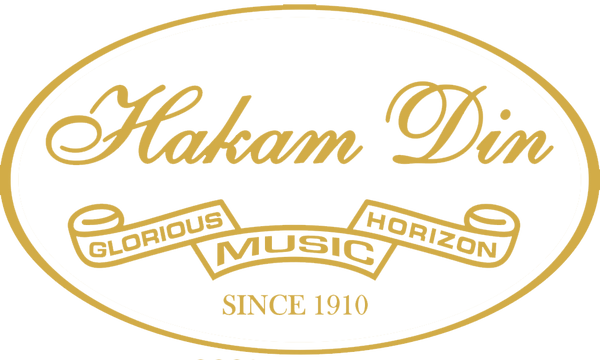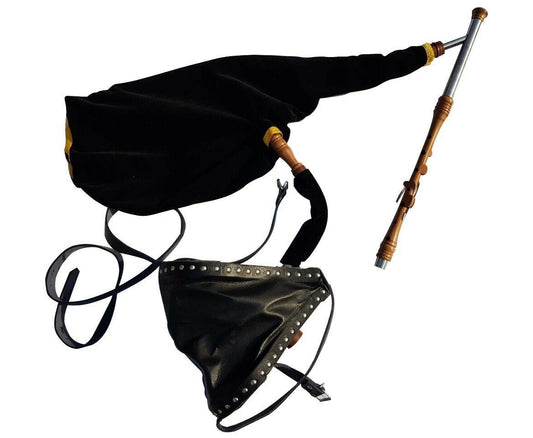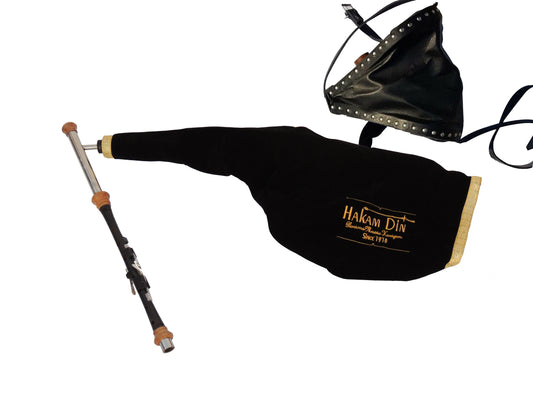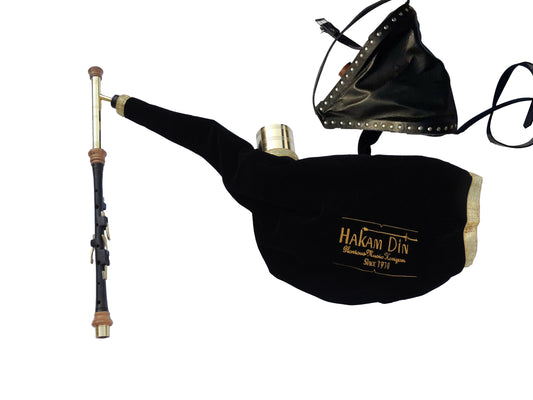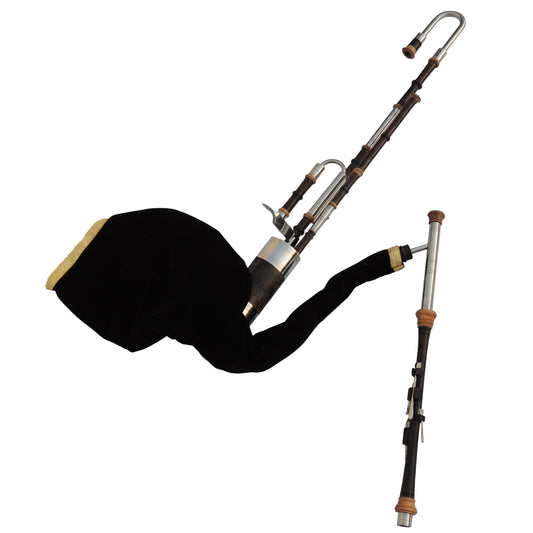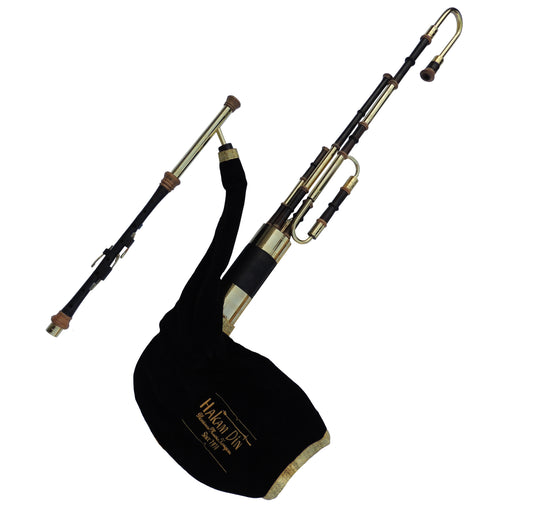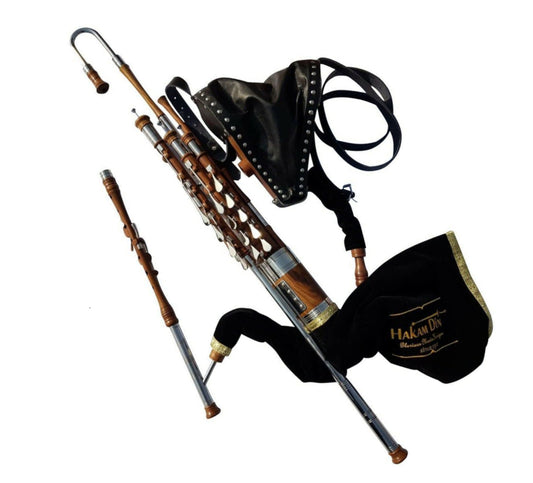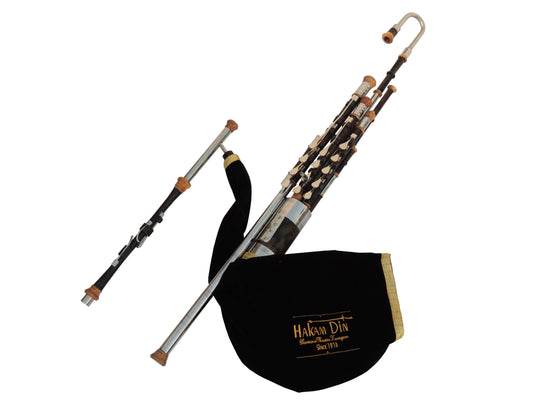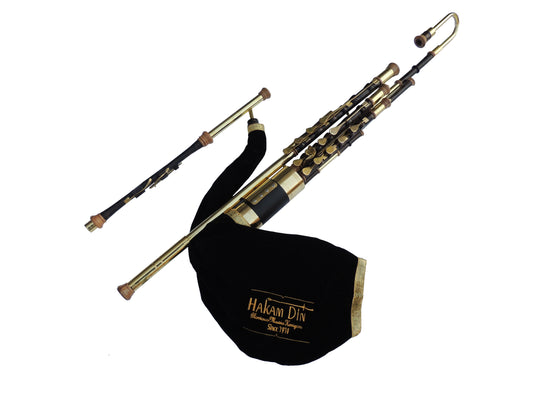-
Uilleann Pipes - Practice Set in D - 3 Nickle Keys - Indian Cocobolo Wood
Vendor:Hakam DinRegular price From £124.99 GBPRegular priceUnit price per -
Uilleann Pipes - Practice Set in D - 4 Nickle Keys - Black Shaded Cocobolo Wood
Vendor:Hakam DinRegular price From £184.99 GBPRegular priceUnit price per -
Uilleann Pipes - Half Set in D - Nickle Metalwork - Indian Cocobolo Wood
Vendor:Hakam DinRegular price From £199.99 GBPRegular priceUnit price per -
Uilleann Pipes - Practice Set in D - Gold Plated Keys - Black Shaded Cocobolo Wood
Vendor:Hakam DinRegular price From £219.99 GBPRegular priceUnit price per -
Uilleann Pipes - Half Set in D - Nickle Metalwork - Black Shaded Cocobolo Wood
Vendor:Hakam DinRegular price From £229.99 GBPRegular priceUnit price per -
Uilleann Pipes - Half Set in D - Gold Plated Metalwork - Black Shaded Cocobolo Wood
Vendor:Hakam DinRegular price From £299.99 GBPRegular priceUnit price per -
Uilleann Pipes - Full Set in D - Nickle Metalwork - Indian Cocobolo Wood
Vendor:Hakam DinRegular price £599.99 GBPRegular priceUnit price per£799.99 GBPSale price £599.99 GBPSale -
Uilleann Pipes - Full Set in D - Nickle Metalwork - Black Shaded Cocobolo Wood
Vendor:Hakam DinRegular price £649.99 GBPRegular priceUnit price per£849.99 GBPSale price £649.99 GBPSale -
Uilleann Pipes - Full Set in D - Gold Plated Metalwork - Black Shaded Cocobolo Wood
Vendor:Hakam DinRegular price £799.99 GBPRegular priceUnit price per£999.99 GBPSale price £799.99 GBPSale
Sound Sample
The Irish Uilleann pipes are the characteristic national bagpipe of Ireland. Earlier known in English as “union pipes”, their current name is a partial translation of the Irish language terms píobaí uilleann meaning “pipes of the elbow”.
The bag of the Uilleann pipes is inflated by the means of a small set of bellows strapped around the waist and the right arm. The bellows not only relieve the player from the effort needed to blow into a bag to maintain pressure, they also allow relatively dry air to power the reeds, reducing the adverse effects of moisture on tuning and longevity. Some pipers can converse or sing while playing. The bag which the bellows fill is clamped under the other elbow, which squeezes the bag to control the flow of air to the reeds which in turn, makes the notes.
The air goes from the bag to the chanter, drones, and regulators. The chanter is played with the fingers like a flute. The chanter has a range of two full octaves, including sharps and flats. The chanter is often played resting on the piper’s thigh, closing off the bottom hole, so that air can only escape through the open tone holes. If one tone hole is closed before the next one is opened, a staccato effect can be created, because the sound stops completely when no air can escape at all.
The Half Set adds the three drones which are simple open pipes; they constantly play three notes spread an octave apart. The full set adds the three regulators which are closed pipes. Untouched, they do not sound, but they have keys that can be opened by the piper’s wrist action. Each regulator key sounds a different note when opened. The regulator keys are aligned so that several may be pressed simultaneously. These enable the piper to play simple chords, giving rhythmic and harmonic accompaniment as needed. There are also many ornaments based on multiple or single grace notes.
The Uilleann pipes are a very highly developed type of bagpipe. Originating in the early 1700s, it developed through the 1800s in Ireland, and within Irish communities abroad, to become the modern instrument. It is a complex instrument, with aspects of its musical functionality found nowhere else.
For two centuries, the instrument has been identified with, and used almost exclusively, for the performance of Irish traditional music. Uilleann Piping is perceived within Ireland as an especially national form of musical practice, and is valued as an essentially Irish form of artistic achievement, both in terms of the performance of the national music, and the manufacture of instruments to a high level of craftsmanship.
In 2017, Uilleann Piping received international recognition when it was inscribed by UNESCO on the Representative List of the Intangible Cultural Heritage of Humanity.
Available as a Full Set, Half Set and Practice Set in Indian Cocobolo Wood in it's Natural Shade or Black Shaded with options of either Nickle or Gold Plated metalwork.
